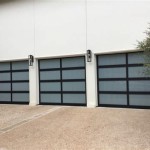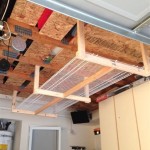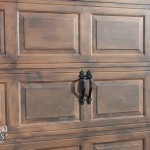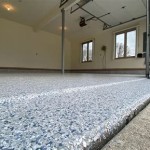How To Make a Concrete Garage Floor Smooth
A smooth concrete garage floor offers numerous advantages, including improved aesthetics, easier cleaning, and reduced dust accumulation. Achieving this smooth surface requires careful planning and execution during the concrete pouring and finishing stages. This article outlines the necessary steps to create a polished concrete garage floor.
Preparing the Subgrade
Proper subgrade preparation is crucial for a successful concrete pour. A stable and level subgrade prevents cracking and settling, ensuring the long-term integrity of the concrete slab. Key steps in this process include:
- Excavation: Excavate the area to the desired depth, ensuring proper drainage considerations.
- Compaction: Compact the soil using a mechanical compactor to achieve a uniform and dense subgrade.
- Gravel Base: Add a layer of compacted gravel to further enhance drainage and stability.
- Vapor Barrier: Install a vapor barrier over the gravel to prevent moisture migration into the concrete slab.
Formwork and Reinforcement
Formwork defines the perimeter and shape of the concrete slab. Reinforcement adds structural strength and helps prevent cracking. Careful attention to these elements is essential for a durable and long-lasting floor.
- Form Placement: Securely position formwork around the perimeter of the garage area, ensuring proper alignment and stability.
- Reinforcement Installation: Place reinforcing mesh or rebar within the formwork, ensuring proper spacing and coverage.
- Expansion Joints: Incorporate expansion joints to accommodate concrete expansion and contraction due to temperature fluctuations.
Concrete Placement and Finishing
Proper concrete placement and finishing techniques are essential for achieving a smooth and level surface. These steps require skill and precision to ensure a high-quality finish.
- Pouring: Pour the concrete evenly within the formwork, avoiding segregation and ensuring proper consolidation.
- Screeding: Use a screed board to level the concrete surface, removing excess concrete and filling low spots.
- Floating: Use a bull float or hand float to further smooth the surface and embed any aggregate particles.
Power Troweling
Power troweling is a crucial step in achieving a highly polished concrete surface. This process uses a rotating machine equipped with troweling blades to smooth and densify the concrete.
- Timing: Begin power troweling when the concrete is firm enough to support the weight of the machine without leaving deep impressions.
- Blades: Start with flat blades for initial smoothing and gradually switch to finishing blades for a polished finish.
- Multiple Passes: Make multiple passes with the power trowel, increasing the blade angle with each pass to achieve the desired level of smoothness.
Curing and Sealing
Proper curing is essential for achieving the desired concrete strength and durability. Sealing protects the concrete from stains and wear. This final stage ensures the longevity of the smooth garage floor.
- Moisture Retention: Keep the concrete surface moist for a minimum of 7 days to allow for proper hydration and strength development. This can be achieved by covering the slab with plastic sheeting or applying a curing compound.
- Sealer Application: Once the concrete is fully cured, apply a concrete sealer to protect the surface from stains, chemicals, and abrasion.
- Sealer Choice: Select a sealer appropriate for the intended use of the garage floor. Options include acrylic sealers, epoxy coatings, and polyurethane sealers.
Troubleshooting Common Issues
Several issues can arise during the process of creating a smooth concrete garage floor. Addressing these potential problems proactively is key to achieving the desired outcome.
- Cracking: Control joints and proper curing techniques help minimize cracking. Address minor cracks with concrete patching compounds.
- Surface Imperfections: Small imperfections can be addressed with grinding or patching. For larger imperfections, consider resurfacing the concrete.
- Blistering: Blistering can be caused by trapped air or moisture. Proper concrete placement and finishing techniques can help prevent this issue.
Alternative Smoothing Techniques
While power troweling is the most common method for achieving a highly polished concrete surface, other techniques can also be employed, particularly for smaller areas or specific finishes.
- Hand Troweling: For smaller areas or tight spaces, hand troweling can provide a smooth finish, although it is more labor-intensive.
- Grinding and Polishing: Concrete grinding and polishing systems can be used to achieve a highly polished, terrazzo-like finish. This process involves using progressively finer diamond abrasives to grind and polish the concrete surface.
- Self-Leveling Overlays: Self-leveling concrete overlays can be applied to existing concrete surfaces to create a smooth and level base for various flooring finishes.

The Facts About Polished Concrete Garage Floors All

How To Stop Concrete Dusting Of Your Garage Floor All Floors

How To Easily Resurface A Concrete Floor Watco

Self Leveling Concrete Preparing For Installation Tips

Smooth Floor In Basement Mile High Coatings

How To Fix A Concrete Garage Floor Diy Family Handyman

Painting Your Garage Floors Do S Dont Making Pretty Spaces Blog

Preparing Concrete Floors For Coating

How To Prepare A Garage Floor For Paradigm Concrete

How To Fix A Concrete Garage Floor Diy Family Handyman
Related Posts








